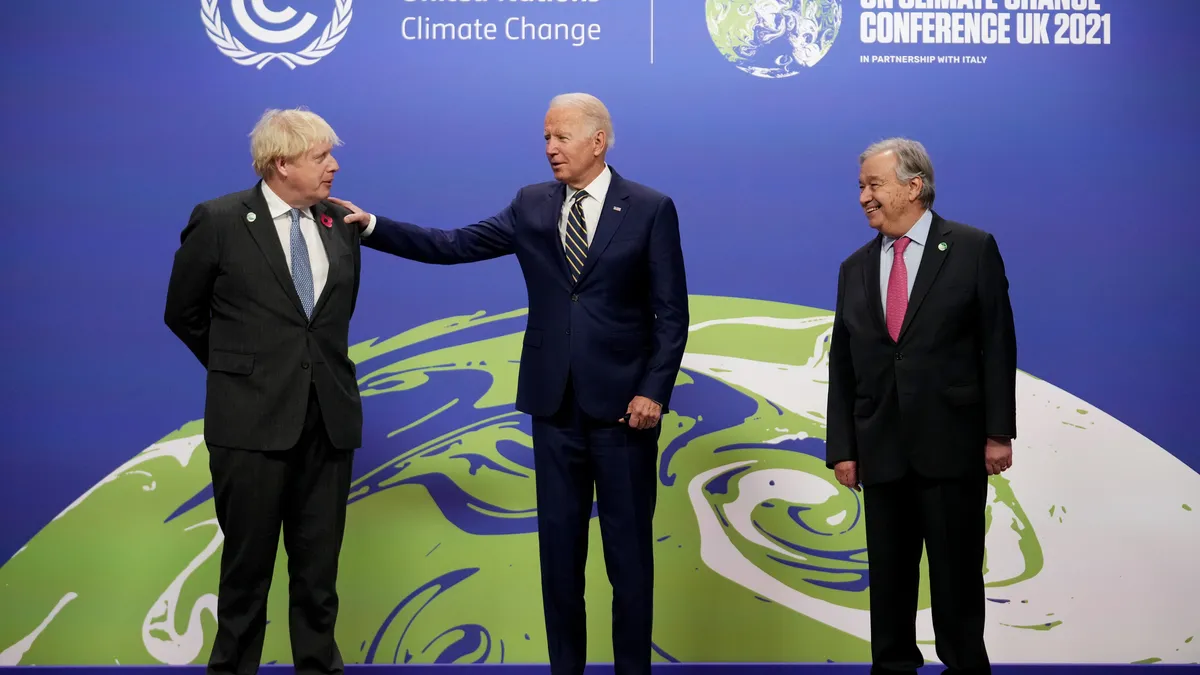The following is a contributed article by Wayne Winegarden, a senior fellow in business and economics at the Pacific Research Institute and director of PRI's Center for Medical Economics and Innovation.
The twenty-sixth session of the Conference of the Parties (COP 26) to the UN Framework Convention on Climate Change in Glasgow is finally upon us. Yet, despite all the previous meetings and government pledges, global greenhouse gas emissions (GHGs) have not yet peaked.
In fact, if current policies continue unabated, the expected GHG emissions will still be too high relative to the levels necessary to constrain global temperature increases to two degrees Celsius or less above pre-industrial levels. Perhaps more revealing, even if all countries met their current pledges and targets, the expected emissions would still be too high to reach this target. As a result, there will undoubtedly be proclamations urging governments across the globe to do more at the conclusion of this year’s COP 26.
As is often the case, "doing more" typically relies on greater government intervention into the marketplace such as burdensome cap and trade regulations, renewable use mandates, and subsidies for electric vehicles and other politically-favored technologies. Instead of government-driven mandates, a more fruitful approach would be empowering competitive electricity markets to usher in market sustainable low-emission technologies.
Empowering wholesale and retail electricity competition will encourage the implementation of efficient low-emission technologies for the same reason markets provide consumers with more reliable and more affordable electricity services: free competition better aligns incentives.
Take the experience of wholesale competition in the U.S.. Approximately 60% of the country is served by competitive wholesale electricity markets managed by a regional transmission organization (RTO) or independent system operator (ISO). In contrast to the monopoly markets, competitive wholesale markets empower independent power producers and suppliers to compete in the generation side of the business. Restructured electricity networks utilize market forces to facilitate which supplier will provide the generation services to meet customer demand.
Competitive markets enable power generation providers to offer electricity across a broader region and to more customers, improving the incentives and ability to produce electricity more efficiently. The competitive model also improves the incentives to invest in productive generation assets by ensuring that utilities bear the consequences (both good and bad) from their investment decisions. Thanks to these positive incentives, customers benefit from better pricing and more efficient electricity services.
What is true about pricing and reliability also holds for low-emission technologies. Competitive suppliers cannot ignore consumers' desires about low emissions technologies just as they cannot ignore their desires about cost and reliability. Therefore, electricity suppliers operating in competitive markets have an incentive to efficiently balance all these considerations. Those suppliers who can balance them better will gain customers, those who cannot, will lose customers. These positive incentives do not exist for utilities operating in monopoly markets. Instead of balancing the needs of customers, monopoly utilities serve the need of regulators, and consequently lack the same incentives to constantly strive to serve customers better.
The evidence appears to be consistent with these incentives.
Experts agree on the power of competitive energy markets
Recognizing both the environmental and pricing benefits from competitive wholesale markets, nine former commissioners and chairs of the Federal Energy Regulatory Commission (FERC) argued in a June 2021 letter to Congress that RTOs and ISOs "provide compelling platforms for renewable energy development and are achieving considerable consumer benefit." According to these commissioners, "the approach FERC has championed for over two decades to ensure a well-functioning and dynamic grid is organized wholesale markets. There is no longer any doubt that these markets are reliable, resilient and highly attractive to innovative new technologies and clean energy resources."
Part of the reason competitive markets are "attractive to innovative new technologies" is due to the benefits enabled by greater economies of scale. As a 2020 study by the Nicholas Institute for Environmental Policy Solutions at Duke University concluded, "in terms of renewables development and integration, participation in RTOs and [Energy Imbalance Markets] offer advantages. Interconnection and the ability to connect far-flung but cheap renewables with customers through transmission is an advantage of RTOs. For example, RTO regions have seen more wind generation development compared to comparably wind-rich regions outside of RTOs. Markets with large geographic reach can improve the flexibility of the power system, which is important in the long run as more variable renewables come online."
The positive incentives created by competitive wholesale markets are further enhanced when competition at the retail level is simultaneously empowered. When evaluating the impact of competition on the ability for commercial and industrial customers to increase their use of low-emission energy sources, the REBA Institute in collaboration with the Brattle Group, found that "allowing customers to choose their suppliers (such as in states with retail choice) has the highest technical potential for expanding access [to low-emission technologies] to the most C&I customers (potentially up to 100 percent) and lowering the cost of renewable energy procurement up to 11 percent" compared to customers who cannot choose their suppliers.
Essentially, many customers prefer electricity that is generated from low emission sources if it is affordable and reliable. Competitive retail markets provide the means for customers to express these preferences and reward those generators who provide the preferred combination of these attributes.
Data from the Energy Information Administration confirm that these incentives matter. The percentage change in carbon-dioxide emissions between 2008 and 2018 (the latest data available) in the retail competitive jurisdictions declined 12.1% on average compared to an average decline of 7.3% in the states that still rely on monopoly retail markets.
The evidence is clear — competitive electricity markets can help the country achieve its clean energy goals in affordable and efficient ways. If the Biden Administration really wants to demonstrate America's leadership on climate change to skeptical leaders from around the world, then it should embrace competitive electricity markets as one of the keys to America's clean energy future.














